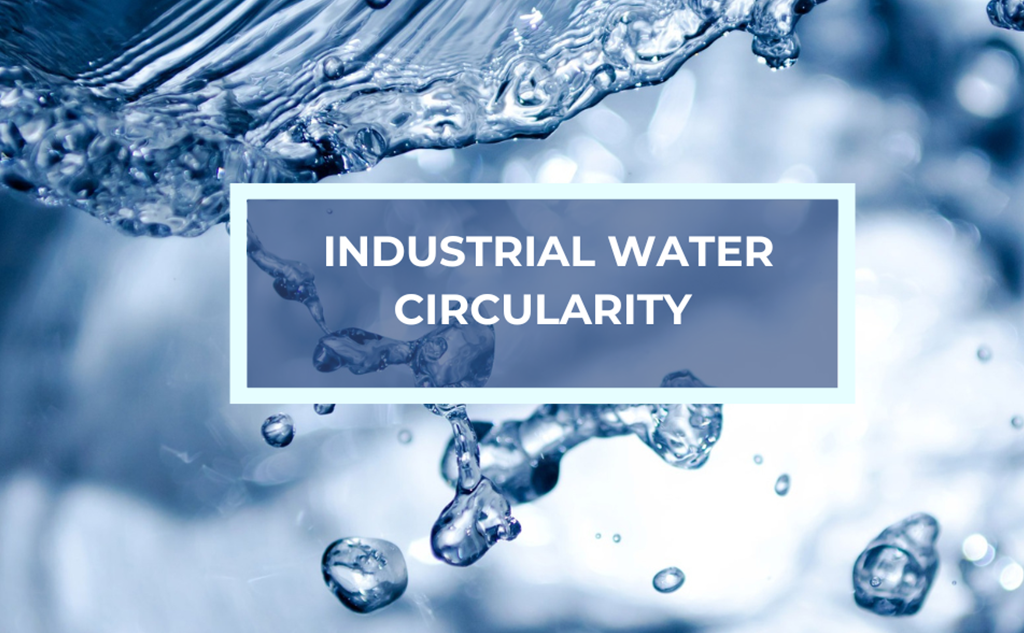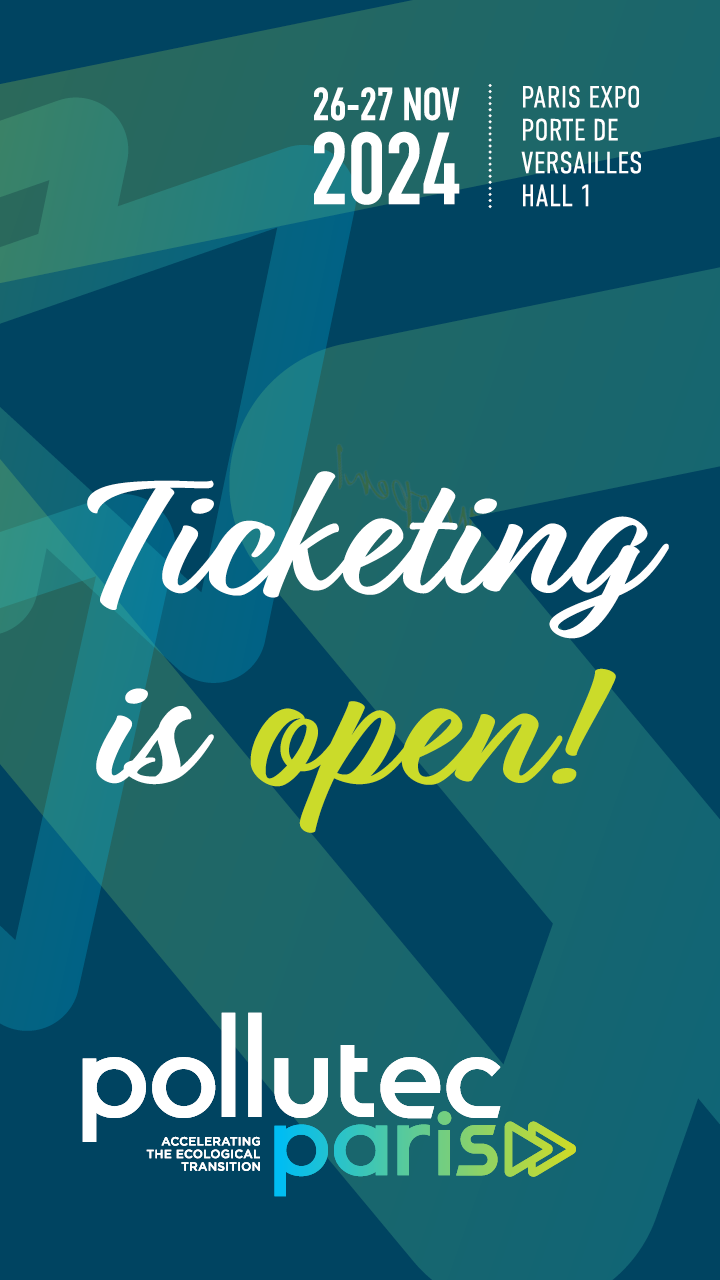As of today, 8% of the 32.8 billion m³ of freshwater drawn from the natural environment each year is used in industry. According to the French Data and Statistical Studies Department (SDES)(1), since 1994 there has been a downward trend in water consumed directly by industry or by other economic activities (-1.6% per year on average) with the volume 42% lower in 2020 than in 1994. While leak repair accounts for a large proportion of these reductions, implementing water efficiency solutions into processes also plays an increasing role, as will the possibilities arising from extending authorisations for the reuse of treated wastewater.
Water: an essential resource for industry
Key to manufacturing processes within many sectors (processing industries such as chemicals, metalworking, agrifood, electronics, etc.), as well as for paper-cardboard manufacture and even waste management, water is essential to economic and environmental performance throughout industry. Water finds application as a solvent (in electrolysis, homogenising mixtures, or for cleaning raw materials, components, tools or equipment), as a raw material (food and drink, medicine, paint, soap, etc.) or as a heat transfer medium (steam or coolant).
Industry has for many years been working to reduce its water consumption, whether through transforming processes, reusing water (process water, rainwater and treated wastewater) or rearranging production schedules. This began in the 1990s with the introduction of environmental management systems, some of which aimed to streamline water use. While measures initially sought to limit leaks and recover and recycle rainwater, other initiatives have emerged over time such as closed-circuit reuse, closed-loop cooling circuits, cascade circuit reuse, recovering water from dewatering processes, and even reusing process water treated in wastewater treatment plants for certain process stages (see box).
It all starts with understanding water consumption
Before a company sets out to reduce its water footprint, one fundamental first step is needed. In order to adapt any production equipment, detailed understanding of its water consumption is essential (a diagnostic or water mapping). More specifically, this involves the setting-up of measuring points to map a particular product, sector and/or area. This mapping enables companies to identify and prioritise risks and areas for improvement, then recommend appropriate technological and/or organisational solutions. Some particularly interesting new technologies for this now exist. For example, Aquassay has developed a set of solutions for the acquisition, transmission, management and exploitation of both mass and real-time data, with on-board task intelligence. The aim is to enable manufacturers to reduce their consumption and waste, optimise overall water cost and improve productivity.
Examples of initiatives across various sectors
In the agrifood industry, for sugar producer Cristal Union two stages of the sugar process at its Bazancourt site consume particularly high volumes of water: washing the sugar beets as they enter the factory, and extracting the sugar from the sugar beet pulp. Cristal Union worked with BWT to implement a system employing the water present in the sugar beets themselves for washing and extraction processes in pre-processing, then recycling using reverse osmosis units. As a result, the site has recycled 400,000 m³ of water per annum since 2011, equivalent to 57% of the water drawn from the natural environment. For its part, the Isigny Sainte Mère dairy cooperative has been working with Clauger, who after setting-up centrally–controlled meters at strategic points, installed a closed-circuit system for cooling/lubrication of the process pumps and recovering water released during the concentration of dairy matter. As a more cross-sectoral example, BWT reverse osmosis units, installed to reduce a brewery’s carbon footprint, have also allowed boiler feedwater to be reduced by 60%, with daily consumption dropping from 25 m³ to just 10 m³.
In the steel-making industry, Arcelor Mittal’s Dunkirk site recycles 3 million m³ per year (equivalent to almost 30% of the water abstracted) while its Florange site reuses 4 million m³ of wastewater a year in its processes. Another example is Ugitech SA’s site in Ugine (Savoie) which has reduced water input by 73% by employing series installation or recycling circuits.
Similarly in the metalworking sector, following investment in closed-loop systems Saint Gobain PAM has already reduced its water consumption by 75% over the last decade and expects to halve this again in the next three years.
In the chemicals, pharmaceuticals and cosmetics sectors, one L’Oréal site in Belgium manufacturing hair care products has reduced its overall water consumption by collecting the start-up water from the two BWT reverse osmosis units. The water recovered is then sent for use in the cooling system. The plant has also installed an effluent treatment system using ultrafiltration and reverse osmosis. Once treated, the water can be used in utilities. In 2022, almost 60 million litres of water were saved. For its part, the Seqens site in the south of France has created a new closed-loop production plant using adiabatic cooling towers, cooling being one of the most water–consuming operations in the production of active ingredients.
Stepping up water frugality
In March 2023, the French government launched the Water Plan(2) with a view to further optimising water frugality, identifying fifty industrial sites with issues to be addressed as a matter of priority. These sites were selected according to three criteria: water consumption, location in areas of water scarcity, and significant potential for reducing consumption. Besides the Arcelor Mittal, Isigny, Seqens and Saint Gobain PAM sites mentioned previously, also noteworthy is Kem One in Balan in the south of the country, which, having reduced its water consumption by 30% over the previous twenty years, brought this down a further 20% in 2023 (in comparison with 2019). The site will continue striving to reduce consumption by a further 75% by 2030 with the closed–loop recycling of the “mother liquor” used as a solvent in processing PVC.
How is treated wastewater reused in industrial processes?
The reuse of treated wastewater is also on the rise in industrial processes, facilitated by recent regulatory changes. For example, under the France Expérimentation initiative designed to remove regulatory obstructions and facilitate innovative projects in the public interest, Danone’s Pays de Bray site near Rouen, which produces fromage blanc and yoghurt, was selected as part of a trial to reduce its annual raw water consumption by 30% – equivalent to saving almost 200 million litres a year – by reusing some of the water leaving its wastewater treatment plant.
Similarly, the Isigny Sainte Mère cooperative is exploring the possibility of reusing water released during evaporation processes, and from wastewater treatment plants, for other suitable processes.
1,000 recycled water projects and innovations supported
The French Water Plan sets the target of rolling out 1,000 recycled water projects by 2027. These projects aim to enable manufacturers to more extensively recycle and/or reuse the various types of water needed for their production processes, so limiting their consumption.
We should also note that the “Innov Eau” call for projects was launched last July(3) as part of this Water Plan, the idea being to “anticipate the water transition by incorporating the ‘water’ issue into France 2030 and contributing to it by supporting innovation in France”. It is centred around four main pillars:
- Managing natural resources to adapt our systems to climate change
- Saving water: securing transport by effectively limiting water losses and acting on water use
- Enhancing treatment to sustainably improve the quality of water and environments
- Developing digital technology and data to support water resource management
After the first projects were selected in early December, the next are due to be decided on 8 April then on 11 September and 13 January 2025. Watch this space.
1) “Fresh water abstraction: main uses in 2020 and 25 years of evolution in France”, Datalab Essentiel, French General Commission for Sustainable Development – French Data and Statistical Studies Department (CGDD – SDES), June 2023
2) “Action plan for resilient, joined-up water management – 53 measures for water”, March 2023. See https://www.ecologie.gouv.fr/plan-action-gestion-resiliente-et-concertee-eau
3) The “Innov Eau” call for projects is run by Ademe.
*There is a Hail Snow Storm (TCN) guarantee and, for farmers, a climate guarantee for harvests (MRC).
Learn more : 2023 Overview of water management regulations in France




